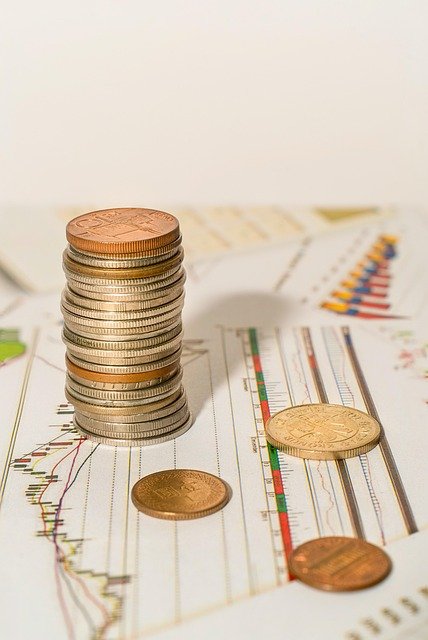Investing in precious metals: profitable or not?
Precious metals have long captured the attention of investors seeking stability and diversification. Gold and silver, in particular, represent tangible assets that have maintained value across centuries. However, determining whether these metals offer genuine profitability requires examining market trends, storage considerations, and investment forms. This article explores the realities of precious metal investments, helping you understand whether they align with your financial goals.

Precious metals represent one of humanity’s oldest forms of wealth preservation. Unlike paper currencies or digital assets, gold and silver possess intrinsic value that has endured through economic upheavals, political instability, and technological revolutions. Yet the question remains: do these traditional stores of value translate into profitable investments in today’s complex financial landscape?
Is it profitable to store money in precious metals, gold or silver?
The profitability of precious metals depends heavily on investment timeframe and market conditions. Historically, gold and silver have served as hedges against inflation and currency devaluation rather than high-growth investments. During periods of economic uncertainty, precious metals typically appreciate as investors seek safe havens. However, during stable economic growth phases, stocks and bonds often outperform metals.
Gold has delivered average annual returns of approximately 10-11% over the past two decades, though with significant volatility. Silver tends to be more volatile than gold, offering potentially higher returns but also greater risk. Unlike stocks that generate dividends or bonds that pay interest, precious metals produce no income, meaning profits come solely from price appreciation.
Storage costs, insurance, and transaction fees reduce net returns. Physical metals require secure storage solutions, whether home safes or bank deposit boxes, adding ongoing expenses. These factors make precious metals more suitable as portfolio diversification tools rather than primary investment vehicles.
What is the overall price of gold and silver and how has the market changed?
Gold prices have experienced substantial fluctuations over recent years. As of late 2024, gold trades around $2,000-2,100 per troy ounce, having reached all-time highs above $2,150 earlier in the year. This represents significant appreciation from the $1,200-1,400 range seen in 2018-2019. The COVID-19 pandemic triggered a major rally as investors sought safety, pushing prices from approximately $1,500 in early 2020 to over $2,000 by August of that year.
Silver typically trades at a fraction of gold’s price, currently hovering around $23-25 per troy ounce. Silver experienced dramatic volatility, spiking above $30 during pandemic-related market turbulence before settling into its current range. The gold-to-silver ratio, which measures how many ounces of silver equal one ounce of gold, currently stands around 80-85:1, though historical averages suggest ratios closer to 60:1.
Central bank policies, geopolitical tensions, inflation rates, and currency strength drive precious metal prices. The US dollar’s performance inversely correlates with gold prices, as metals become more expensive for foreign buyers when the dollar strengthens. Industrial demand, particularly for silver in electronics and solar panels, adds another dimension to price movements.
How stable are investments in precious metals considered?
Precious metals offer relative stability compared to many asset classes, though they are not immune to volatility. Gold’s reputation as a safe haven stems from its consistent demand across cultures and its limited supply. Unlike fiat currencies that governments can print indefinitely, gold production remains constrained by mining capacity and geological availability.
During the 2008 financial crisis, gold prices rose while stock markets plummeted, demonstrating its protective qualities. Similarly, during the 2020 pandemic shock, gold provided portfolio stability when equity markets experienced severe turbulence. However, precious metals can experience sharp corrections; gold fell approximately 30% from 2011 peaks to 2015 lows.
Silver exhibits greater instability due to its dual nature as both investment and industrial commodity. Economic slowdowns reduce industrial demand, pressuring prices downward even as investment demand increases. This makes silver more unpredictable than gold, though potentially more rewarding during economic expansions.
Financial advisors typically recommend allocating 5-10% of investment portfolios to precious metals for diversification rather than viewing them as primary holdings. This allocation provides inflation protection and crisis insurance without overexposure to metals’ limitations.
If you consider gold or silver as an investment, is it better to buy jewelry or bullion?
Bullion represents the superior choice for investment purposes. Bullion coins and bars trade close to spot metal prices with minimal premiums, typically 3-8% above the metal’s intrinsic value. This tight spread between purchase and sale prices maximizes investment efficiency. Recognized bullion products like American Eagles, Canadian Maple Leafs, or standard gold bars maintain high liquidity, easily convertible to cash through dealers worldwide.
Jewelry carries substantial markups covering craftsmanship, design, retail overhead, and brand premiums. Purchasing jewelry means paying 100-300% above the metal’s melt value, with resale values typically recovering only the metal content minus refining costs. A gold necklace purchased for $2,000 might contain only $800 worth of gold, representing immediate value loss.
Authenticity verification poses another challenge with jewelry. Bullion from reputable mints includes purity guarantees and anti-counterfeiting features. Jewelry purity varies, requiring professional assessment to determine actual precious metal content. Hallmarks can be misleading or absent, creating uncertainty about true value.
Storage and insurance costs favor bullion’s compact form over bulky jewelry pieces. However, jewelry offers aesthetic enjoyment and utility beyond investment returns, making it reasonable for those valuing wearability alongside metal ownership. For pure investment purposes, bullion’s transparency, liquidity, and cost efficiency make it the clear choice.
Comparing precious metal investment options
| Investment Form | Typical Premium Over Spot | Liquidity | Storage Requirements |
|---|---|---|---|
| Gold Bullion Coins | 3-8% | High | Minimal space, secure location |
| Silver Bullion Coins | 8-15% | High | Moderate space, secure location |
| Gold Bars (1 oz+) | 2-5% | High | Minimal space, secure location |
| Silver Bars (10 oz+) | 5-10% | Moderate | Significant space, secure location |
| Gold Jewelry | 100-300% | Low | Minimal space, less security concern |
| Silver Jewelry | 150-400% | Very Low | Minimal space, less security concern |
Prices, rates, or cost estimates mentioned in this article are based on the latest available information but may change over time. Independent research is advised before making financial decisions.
Precious metals occupy a unique position in investment portfolios, offering tangible value and historical reliability. While they provide stability during turbulent times and hedge against currency devaluation, they lack the growth potential of equities or income generation of bonds. Success with precious metal investments requires realistic expectations, understanding market dynamics, and choosing appropriate investment forms. Bullion offers the most efficient exposure to metal prices, while jewelry serves better as adornment than investment. Ultimately, precious metals function best as portfolio diversification components rather than wealth-building cornerstones, providing insurance against economic uncertainty while complementing more growth-oriented assets.




